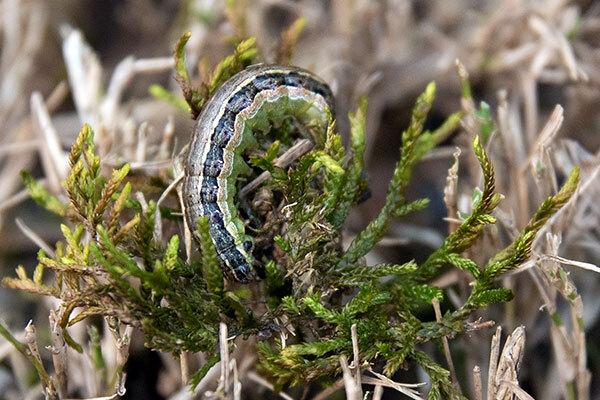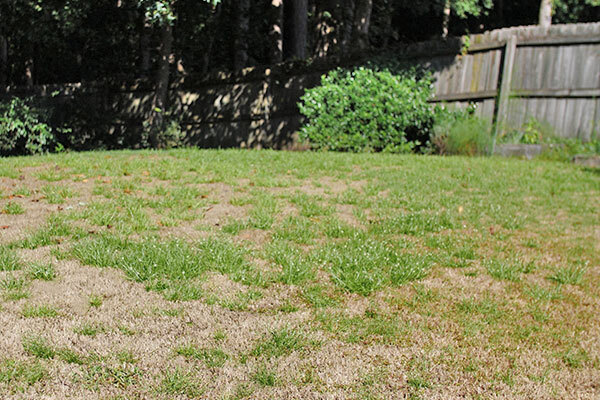
Armyworms are small caterpillars with distinctive stripes down their bodies and an inverted "Y" mark on their heads. When you understand where armyworms like to live, hide, and molt, it will be easier to control armyworms on your property.
Use this guide to learn where armyworms live.
Finding Armyworms Outdoors
Check for armyworms while the sun is down to see them while they're actively feeding on plants in your lawn. When checking for armyworms during the daylight hours, you will need to sift through the loose soil around your plants--armyworm larvae will seek shelter there during the day, emerging to feed again at night.
Pro Tip
If you need to check for armyworms in the daytime, try flushing them out with soap. Mix up a bucket of soapy water with 3 tablespoons of dish soap in a gallon of water. Pour the mixture over a 3-foot square area in question. The soapy mixture will irritate their skin and any armyworms present will wriggle to the surface.
Keep watch for armyworm activity in the late summer or early fall, when they are most active. Armyworms are not able to survive in cold weather, and will be killed off by the first frost in most cases. If you see similar damage during cold weather, it's likely that it is caused by a different pest.
Where to Find Army WormsFall army worms favor grasses like fescue, rye, bermuda, and bluegrass, but they may move on to other plants if presented with the option. Armyworms prefer lush, actively growing, well-fertilized grasses for feeding. You may be able to spot tiny dirt piles where the larvae have emerged from the soil.
Army worms are most common in the southeastern United States, but the adult moths are sometimes carried to the Midwestern and Eastern states by weather patterns. Fall army worm sightings have become more common in more areas of the U.S. in recent years. If you think you may have spotted signs of army worms, we recommend using the methods described here to confirm before extensive damage can occur.
Armyworm Damage To Look For

A lawn that has been infested with armyworms may appear dormant, brown, or barren. Close inspection of an armyworm problem will reveal blades of grass that have been chewed down to the stem. Some blades may have had green leaf matter eaten away leaving a "windowpane" effect while other stalks may have been entirely consumed to the ground.
Other pests can create similar damage, but a soap flush test can help you identify the armyworms if they're on your lawn.
Before they hatch as caterpillars, you may be able to spot a cluster of their tiny, round eggs attached to a structure or other flat surface near a grassy area. These eggs will usually hatch within two days and the first phase of an army worm invasion can begin.
Next Steps
You've learned where to find army worms on your property. Now, check out the next part of this lawn pest guide to learn how to treat your lawn for army worms.



